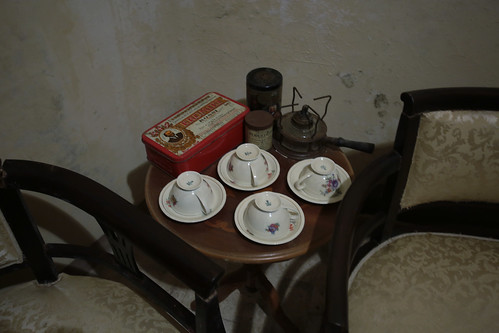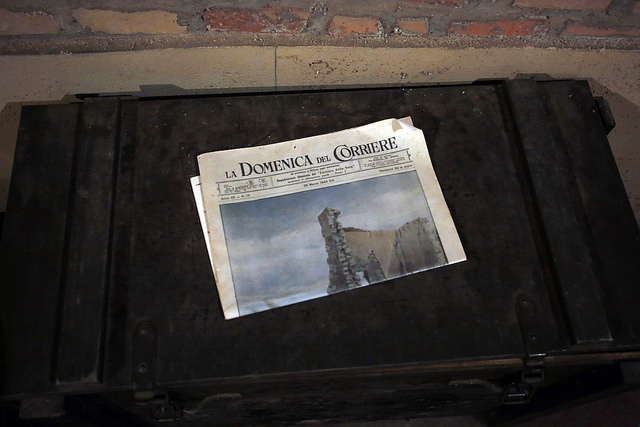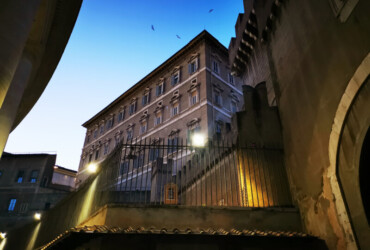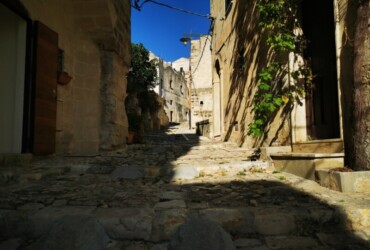Did you know that in the centre of Villa Ada there is an air raid shelter? I discovered it by chance, almost two months ago, on Facebook:
 I found a sponsored news about the guided tours and, of course, I went immediately to book my ticket! It is called “bunker of Villa Ada”, but it is an anti-aircraft shelter: it was built for the Savoia family (the Italian royal dynasty in early 1900), whose residence was inside the villa. It was abandoned in 1943 and today is managed by the underground Rome association, which was responsible for cleaning it up after years of neglect, to redecorate it (everything was stolen) and also takes care of the guided tours. Before talking about the bunker, I want to tell you something about the park that hosts it: Originally it seems that this area consisted of land owned by a single person, and it seems there were vineyards. When the private land was unified into a single property, the park was “outside Rome”, while today it is located in the centre (Parioli area) and, with its 180 hectares of extension, is the second largest park in the city after Villa Doria Pamphilj (184 hectares). The complete name of the park is Villa Ada Savoia: Ada was the wife of the count who owned the park for about ten years, and of course Savoy because later it belonged to the royal family
I found a sponsored news about the guided tours and, of course, I went immediately to book my ticket! It is called “bunker of Villa Ada”, but it is an anti-aircraft shelter: it was built for the Savoia family (the Italian royal dynasty in early 1900), whose residence was inside the villa. It was abandoned in 1943 and today is managed by the underground Rome association, which was responsible for cleaning it up after years of neglect, to redecorate it (everything was stolen) and also takes care of the guided tours. Before talking about the bunker, I want to tell you something about the park that hosts it: Originally it seems that this area consisted of land owned by a single person, and it seems there were vineyards. When the private land was unified into a single property, the park was “outside Rome”, while today it is located in the centre (Parioli area) and, with its 180 hectares of extension, is the second largest park in the city after Villa Doria Pamphilj (184 hectares). The complete name of the park is Villa Ada Savoia: Ada was the wife of the count who owned the park for about ten years, and of course Savoy because later it belonged to the royal family
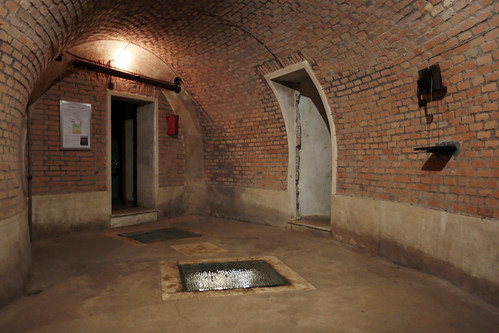 The peculiarity was that it is inside a hill and not under the terrain of the park. The bunker had two flaws: it wasn’t a place where to shelter from ground attacks (but only from the aerial bombardments) and, secondly, one had to think of a covering with marble slabs to protect the tuff structure from the impact of the bombs. The most exciting thing about the internal structure is its “S” shape, which was adopted to discharge the shock wave of the bombs on the entrance door, which is located just after the gate set by the association “Roma sotterranea”. This door weighs well 1800 kg and could well withstand the shock waves caused by the impact of the bombs on the ground above.
The peculiarity was that it is inside a hill and not under the terrain of the park. The bunker had two flaws: it wasn’t a place where to shelter from ground attacks (but only from the aerial bombardments) and, secondly, one had to think of a covering with marble slabs to protect the tuff structure from the impact of the bombs. The most exciting thing about the internal structure is its “S” shape, which was adopted to discharge the shock wave of the bombs on the entrance door, which is located just after the gate set by the association “Roma sotterranea”. This door weighs well 1800 kg and could well withstand the shock waves caused by the impact of the bombs on the ground above.
 Now I would like to talk to you about the internal structure of the bunker because I think that there are some very interesting aspects as, for example, the rubber put in order not to allow the used gas to enter any enemies arrived up to the bunker. All the doors could be opened and closed only from the outside (another detail that indicates the fact that it was not intended as a shelter for defence from ground attacks). Along the corridor, which was covered with cars, there are various rooms and openings whose finishes are in plaster, even if it looks like travertine, and this choice was made, probably, to save time in the construction of the shelter itself. The royal family was used to arrive there by car and that there were at least two cars (“Fiat torpedo reale”) thanks to the biography of Filippo D’Assia, nephew of Vittorio Emanuele III. In the book he mentions to remember when they arrived at the shelter in the car and also when once arrived, they were waiting for the arrival of the other car from Villa Polissena (the residence of his parents). Just outside the room that served as a “shelter-room”, there was a telephone that probably served to communicate with the outside of the structure.
Now I would like to talk to you about the internal structure of the bunker because I think that there are some very interesting aspects as, for example, the rubber put in order not to allow the used gas to enter any enemies arrived up to the bunker. All the doors could be opened and closed only from the outside (another detail that indicates the fact that it was not intended as a shelter for defence from ground attacks). Along the corridor, which was covered with cars, there are various rooms and openings whose finishes are in plaster, even if it looks like travertine, and this choice was made, probably, to save time in the construction of the shelter itself. The royal family was used to arrive there by car and that there were at least two cars (“Fiat torpedo reale”) thanks to the biography of Filippo D’Assia, nephew of Vittorio Emanuele III. In the book he mentions to remember when they arrived at the shelter in the car and also when once arrived, they were waiting for the arrival of the other car from Villa Polissena (the residence of his parents). Just outside the room that served as a “shelter-room”, there was a telephone that probably served to communicate with the outside of the structure.
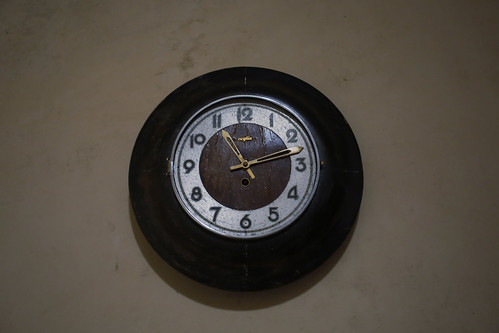 Along the floor of the corridor, you can see some grids (in marble, if I’m not mistaken) that were part of the bunker ventilation system and were used to let out the “consumed” air. The room that served as a shelter is tiny, and there were no beds nor a kitchen: there was only a small bathroom, and that’s because the royal family would have to pass here little time, just what was waiting for the airstrike to end. The clock is broken, stopped at 11:13 a.m.: the hour of the bombardment in San Lorenzo (1943).
Along the floor of the corridor, you can see some grids (in marble, if I’m not mistaken) that were part of the bunker ventilation system and were used to let out the “consumed” air. The room that served as a shelter is tiny, and there were no beds nor a kitchen: there was only a small bathroom, and that’s because the royal family would have to pass here little time, just what was waiting for the airstrike to end. The clock is broken, stopped at 11:13 a.m.: the hour of the bombardment in San Lorenzo (1943).
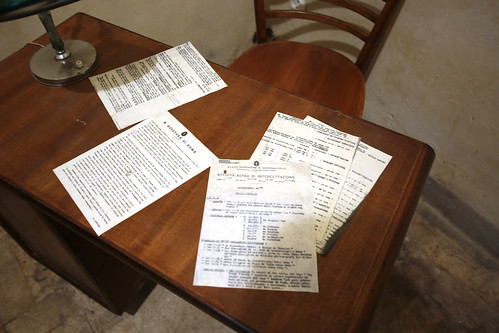 All that, at the time, was inside was stolen during the years of abandonment of the bunker (from 1943 to 2012): it was the association that, during the work to clean and restore the shelter, has “Refurbished” the refuge in the way that comes closest to the original! Think that to clean up and rearrange everything worked 48 volunteers for an amount of about 3000 hours of work. The guided tour, which you can book from the official website of the association, costs 10 euros.
All that, at the time, was inside was stolen during the years of abandonment of the bunker (from 1943 to 2012): it was the association that, during the work to clean and restore the shelter, has “Refurbished” the refuge in the way that comes closest to the original! Think that to clean up and rearrange everything worked 48 volunteers for an amount of about 3000 hours of work. The guided tour, which you can book from the official website of the association, costs 10 euros.

